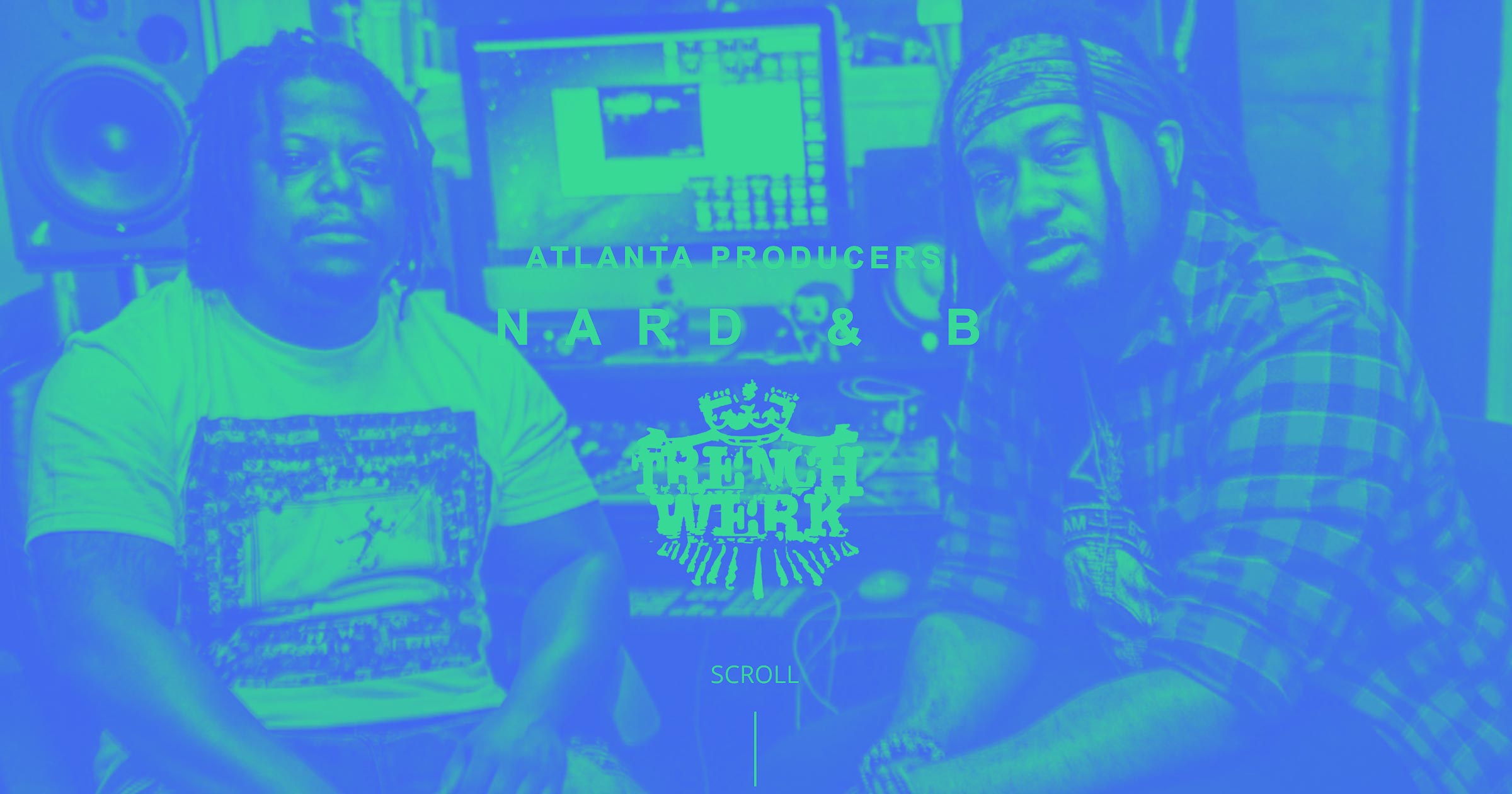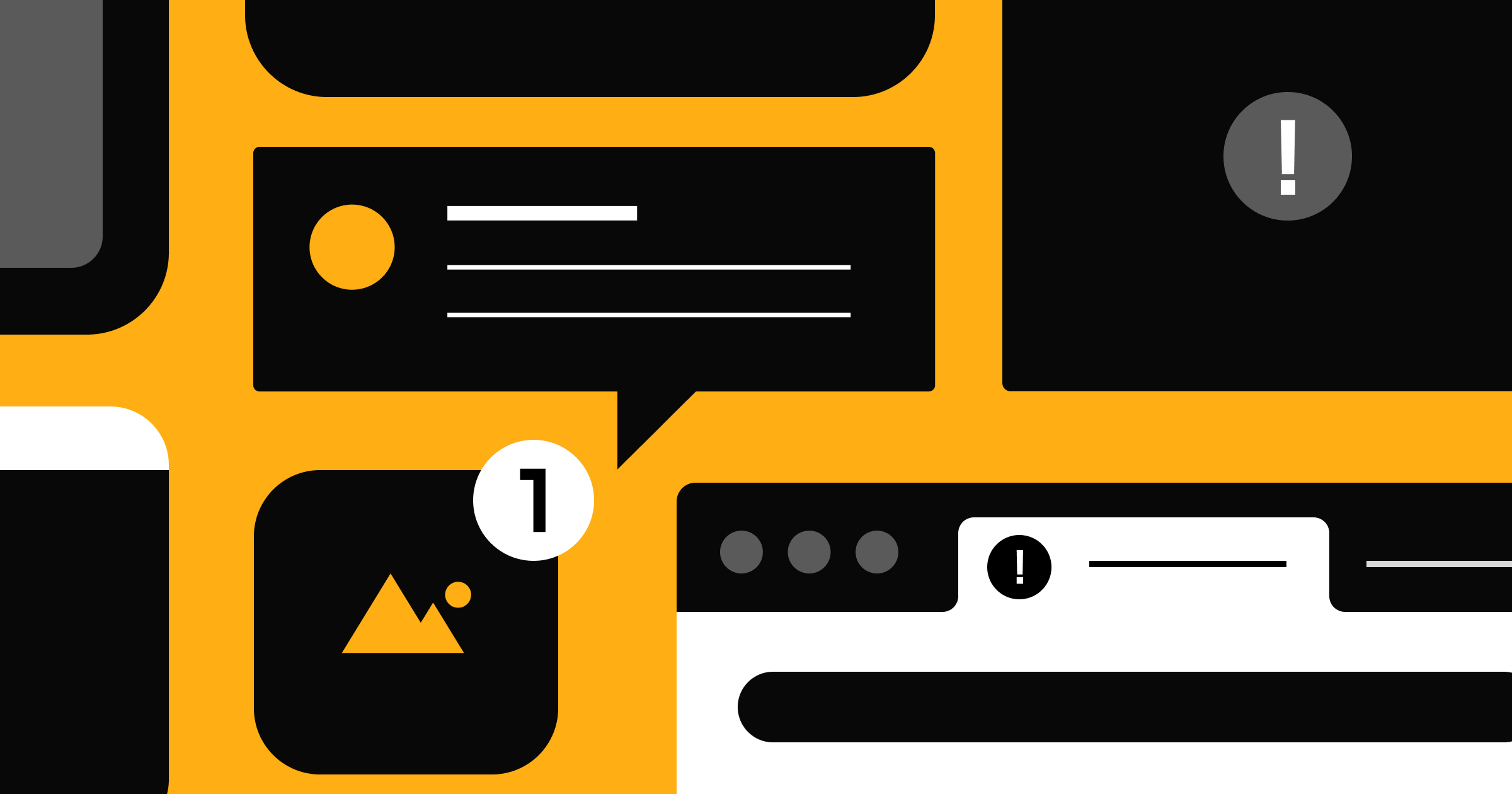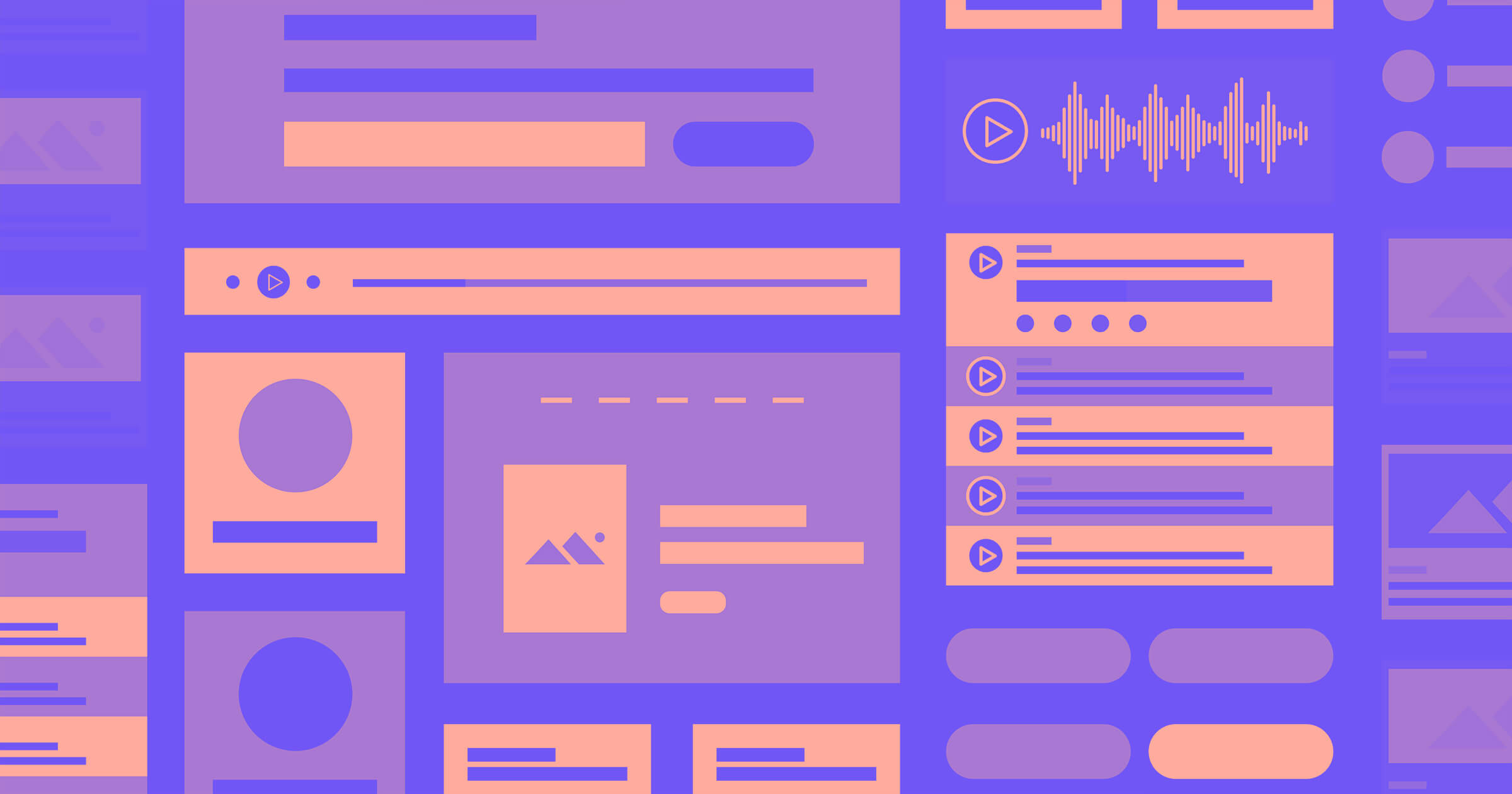If you work in the music industry, you know that having a unique sound is only half the battle.
In today’s digital age, it’s equally important to have a strong online presence to reach a wide audience and connect with new fans and customers. Streaming has surpassed radio as the most popular way to listen to music in the United States — meaning most potential listeners are on the web.
But how do you carve out a digital space for yourself and your music? That’s where music marketing comes in. Whether you’re a songwriter, musician, or producer, having a great marketing strategy is essential to stand out.
We’re here to help you get started by exploring what marketing is in the music industry, providing tips on how to do a music marketing campaign, and showcasing some inspiring music websites.
What is music marketing?
Music marketing is using messaging and advertising to connect listeners to music. It’s crucial for promoting songs, artists, and music-related services to potential customers and fans while maintaining a dedicated listener base.
Marketing in the music industry aims to increase buzz around a particular artist or band to drive earnings and success. As more people listen to an artist’s music, revenue from sales and streaming will increase. With a larger audience and greater demand for your work, you’ll be able to sell merchandise, book shows, and grow your professional network.
Music marketing is multifaceted. To effectively market your music, you must incorporate:
- Branding. Your artist name, logo, and color palette — these are all essential elements of branding. Branding is the process of projecting your values, beliefs, and priorities through visual, auditory, and written content. Check out our blog to learn how to design your brand from the ground up.
- Advertising. Advertising is how you bring attention to your music. From digital ads on social media to billboards, you need to spread the word about your work. Because so much music listening is done online, it’s important to direct advertising streams toward your digital presence to promote your website and attract new listeners to your sound.
- Event planning. Whether it’s coordinating an online release party or scheduling a concert, planning and organizing events is essential for growing your audience. Events serve as touchpoints for new fans to discover your music and dedicated listeners to feel connected to you. They are also a great opportunity to make sales: You can sell merchandise, albums, and even autographs.
Learning how to get a marketing team for your music career is hard — especially if you’re just starting out. In the past, music marketing was largely handled by record labels that would invest in campaigns and promotion to help artists gain exposure and grow their audience. Now, in the age of streaming, artists can create and distribute their own music. For this reason, many artists handle their own music marketing efforts, using social media and marketing tools to reach fans and promote their music.
If you’re looking to market your own music and don’t know where to begin, check out our advice on how to create a marketing plan or write a marketing proposal.



















Build websites that get results.
Build visually, publish instantly, and scale safely and quickly — without writing a line of code. All with Webflow's website experience platform.
4 tips for developing a music marketing campaign
A successful music marketing campaign must help an artist build their music success, stand out from the crowd, and reach their audience. Let’s take a look at some tips for creating a music marketing campaign that will take your career to the next level.
1. Create a website
A website is the cornerstone of your online presence. It provides a central hub for all of your music and related content, including blog posts, upcoming shows, and merchandise.
Use a website builder like Webflow to create a professional and engaging website that promotes your music and unique brand. Our visual web development platform doesn’t require any knowledge of coding, so you can create a stunning site with no coding experience.
2. Develop a social media marketing plan
Social media platforms like TikTok, Instagram, and YouTube are powerful tools for musicians and music industry professionals. These platforms give artists a place to connect with an audience and promote music in a personal and engaging way.
Develop a plan for your social media marketing and outline what content you will share, when you will share it, and how you will engage with your audience. Consistency is key when it comes to social media, so make sure to post regularly.
Sharing a clip of you singing or playing your song in an Instagram Reel or lip-syncing to it as TikTok audio can help you reach new listeners organically. Fans and new listeners may choose to share your original content or create content of their own using your music — a form of organic marketing that doesn’t come with a price tag.
3. Compile an electronic press kit
An electronic press kit, or EPK, is a digital portfolio of your music and related content. It includes your bio, music, videos, press releases, and photos. Having an EPK on hand is crucial for working with media outlets and booking agents — they need to get to know you and your work, and they don’t want to dig for that information.
The best place to host your EPK is on your website. It’s easy to direct people to, and it’s widely accessible to fans and potential collaborators, such as other artists and brands. Create an about page on your site that runs visitors through everything they need to know about you, your music, and your career at a glance. Include a contact page with a contact form so media outlets and industry professionals can get in touch.
4. Use email marketing
Email marketing allows you to reach and engage with your audience directly in their inboxes. Use email marketing to announce new music, new releases, tour dates, merch sales, podcast appearances, gigs, and other news about your music and services. This will allow you to keep current listeners engaged and up-to-date on your work.
Plus, marketing emails are a great opportunity to increase conversions — calls to action (CTAs) that encourage subscribers to stream new music and purchase merchandise will only help to boost revenue.
To run an email campaign, promote and link to the subscription across all platforms, including your social media profiles and website. Consider creating a pop-up form on your site that appears to new visitors and encourages them to sign up for newsletters and updates. Use your campaign to share exclusive content and sales — people will be more likely to subscribe if they know they’ll get early access to deals on merchandise or concert tickets.
3 music websites to inspire you
A great music website will help you showcase your art, sell your music, and connect with your fans. Plus, it’s a powerful tool to help you stand out in today’s crowded music market. Here are three examples of music websites to act as inspiration as you create your own:
1. The Music Department
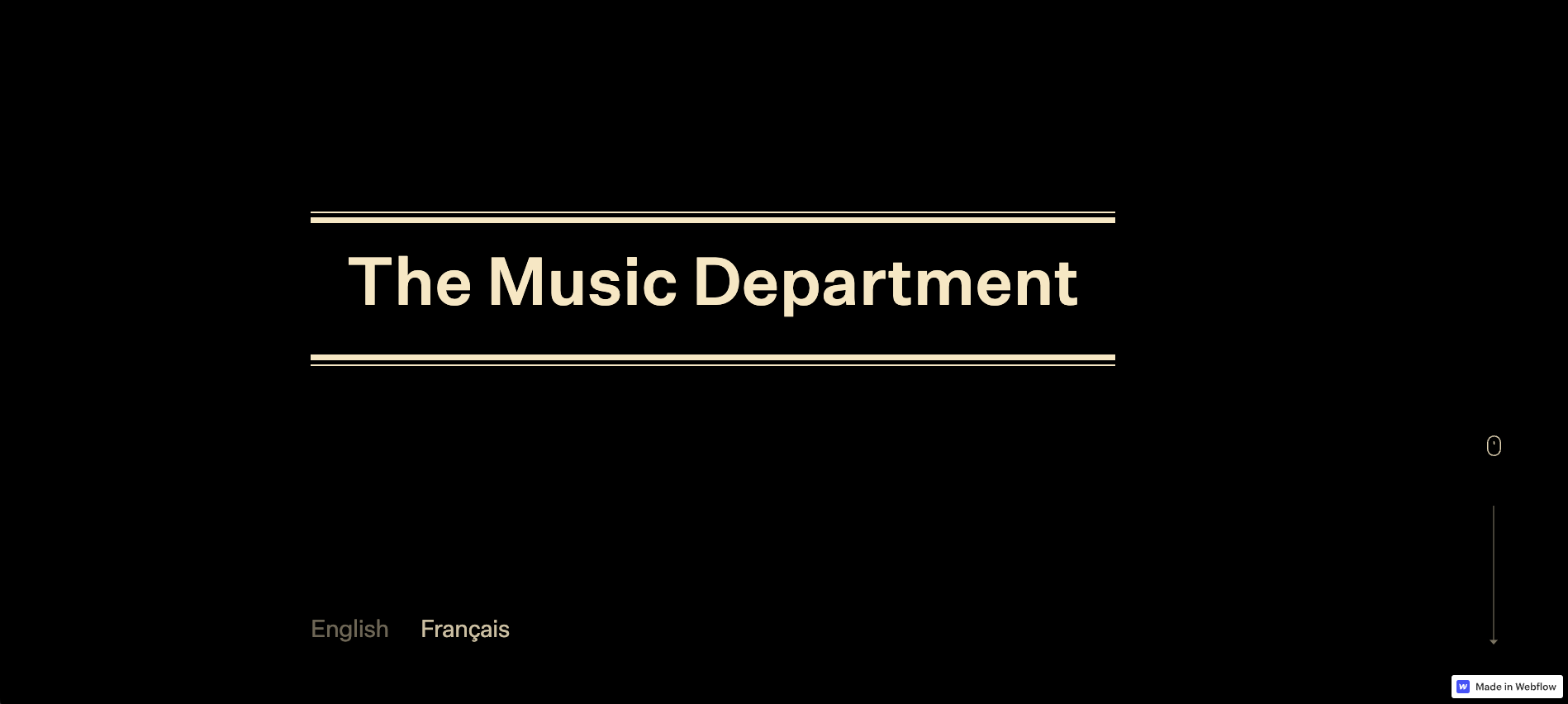
The Music Department’s website is a great example of a modern and professional music company site. Visitors are first met by pale yellow text reading “The Music Department” on a black background, appearing like the simple cover of a music book. Scrolling down the landing page reveals a unique animation that mimics the turning of a page, unearthing new information while invoking the feeling of flipping through a book.
The site features a clean design with simple and easy-to-follow navigation. A particularly impactful section shows the logos of companies the brand has collaborated with alongside the text “Brands we helped cut through the noise” — here, The Music Department makes clear its track record for success. The site also has an online store where visitors can purchase music and merchandise.
2. Marta Tchai
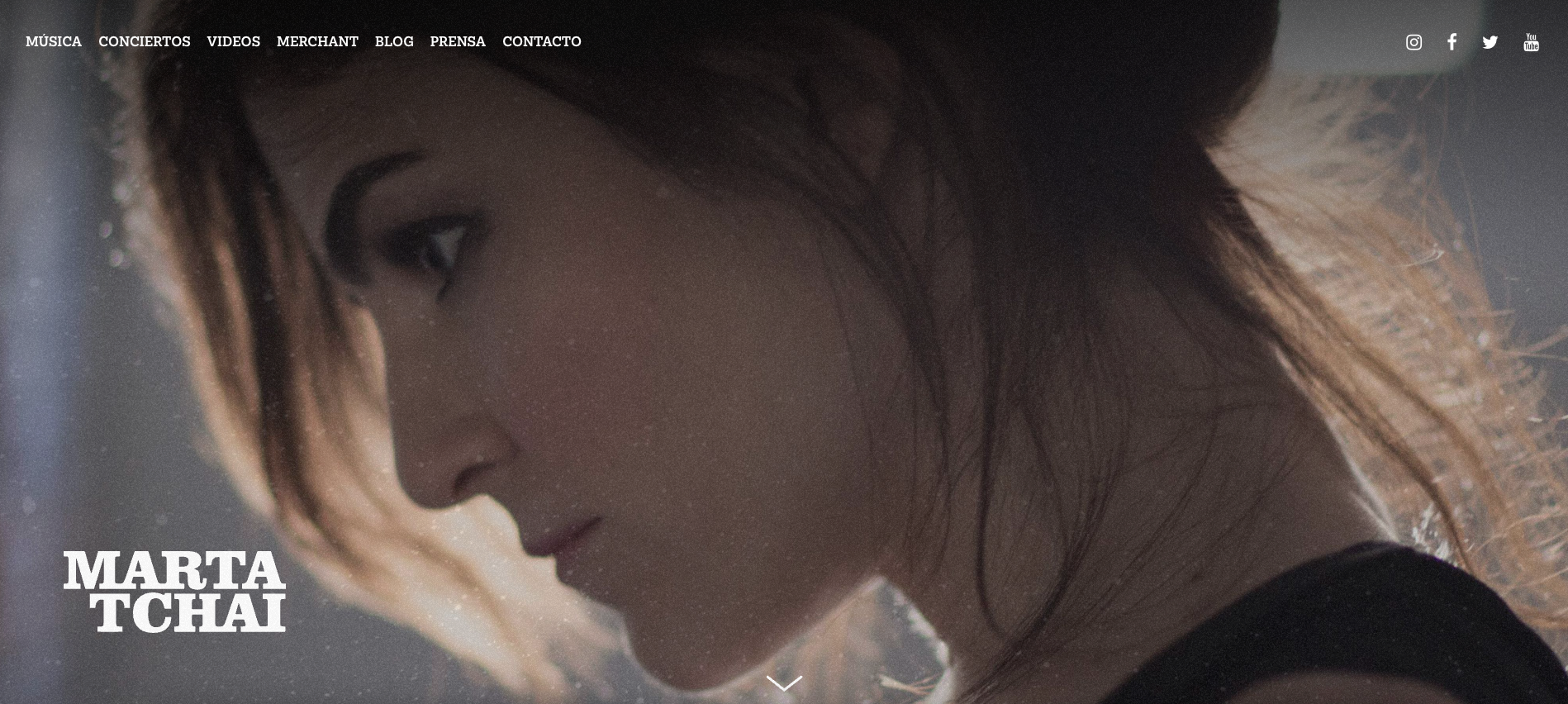
Marta Tchai’s portfolio stands out thanks to its attention to detail. Over Marta’s portrait on the landing page, specks of white move slowly into the center of the screen, like specks of dust. This animation adds visual intrigue that matches her music’s vibe: mellow and serene.
The web designer, Diego Delgado, styled the other webpages with a textured beige background and deep red text. This color combination mirrors Marta’s most recent album art, and it has enough contrast to be readable.
This musician website asserts Marta’s brand, especially her latest work, while guiding site visitors to learn more about her music.
3. Abbigale Dawn
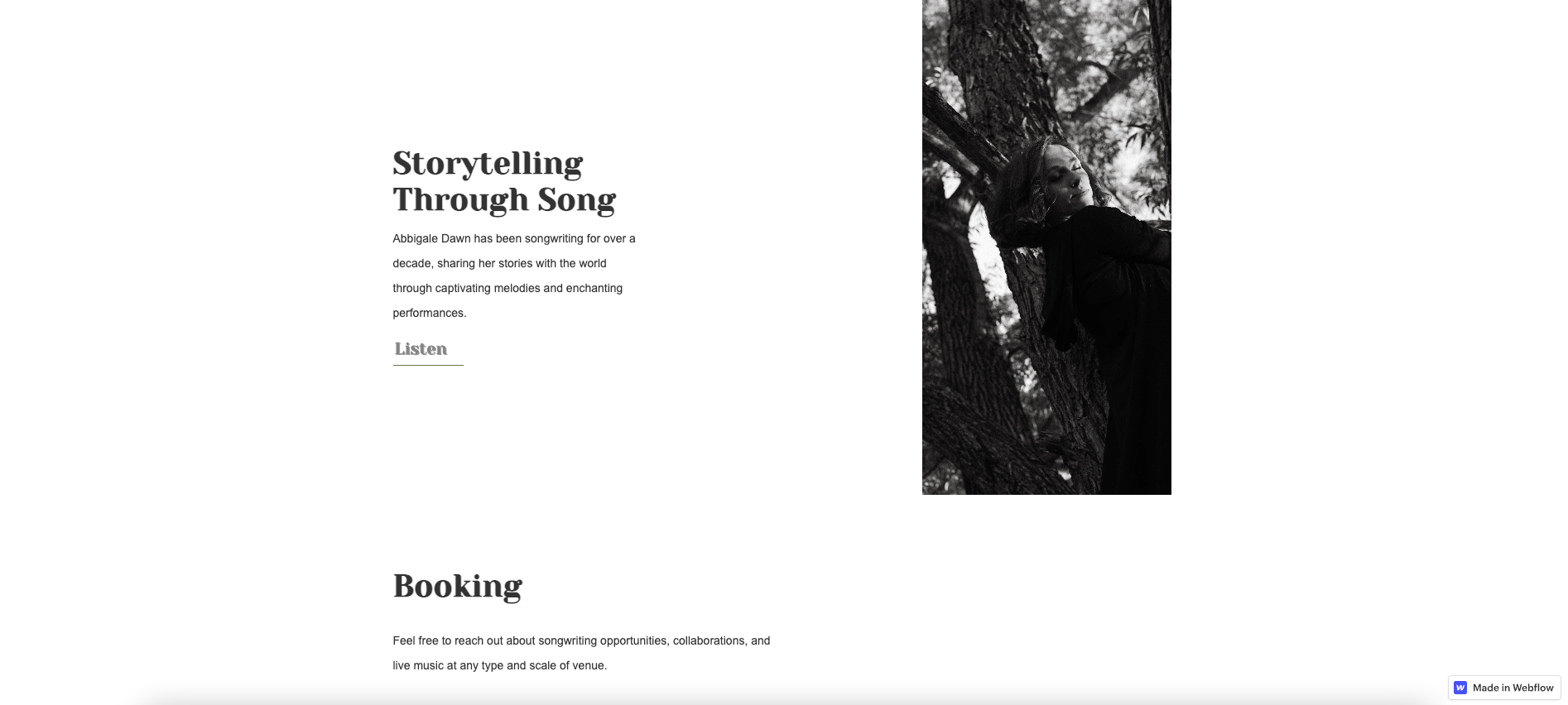
Abbigale Dawn’s minimal portfolio needs only one page to market her musical talent. Instead of encouraging visitors to click through the website, it leads them to Abbigale’s music and social media with external links and concludes with a contact form.
The main header titled “Storytelling Through Song” communicates Abbigale’s identity as a songwriter in just a few words. It catches the visitor’s eye with a large serif font to draw attention to the bio below and to the call-to-action link prompting visitors to listen to her music, which leads to her Spotify page.
A moody artist portrait and short bio show off Abbigale’s personality, professional history, and goals. Their placement on either side of the page creates balance.
With a black-and-white color scheme and straightforward messaging, this website lets what really matters — the music — stand out.
Create a site for your music with Webflow
In today’s world of music, digital marketing is more important than ever. Whether you’re an artist looking to promote your music or a music service provider seeking to connect with clients, Webflow has the tools and features you need to make your music marketing dreams a reality — and you don’t need to know how to code.
With Webflow, you can get started on creating a stunning professional website where fans can discover your work. Our free educational resource, Webflow University, can teach you everything you need to know to create an effective site, including graphic design and building a satisfying user experience.
Plus, with Webflow’s built-in ecommerce features, you can easily sell your music and merchandise on your website. Get your music out there with an incredible digital platform — entirely built by you.


